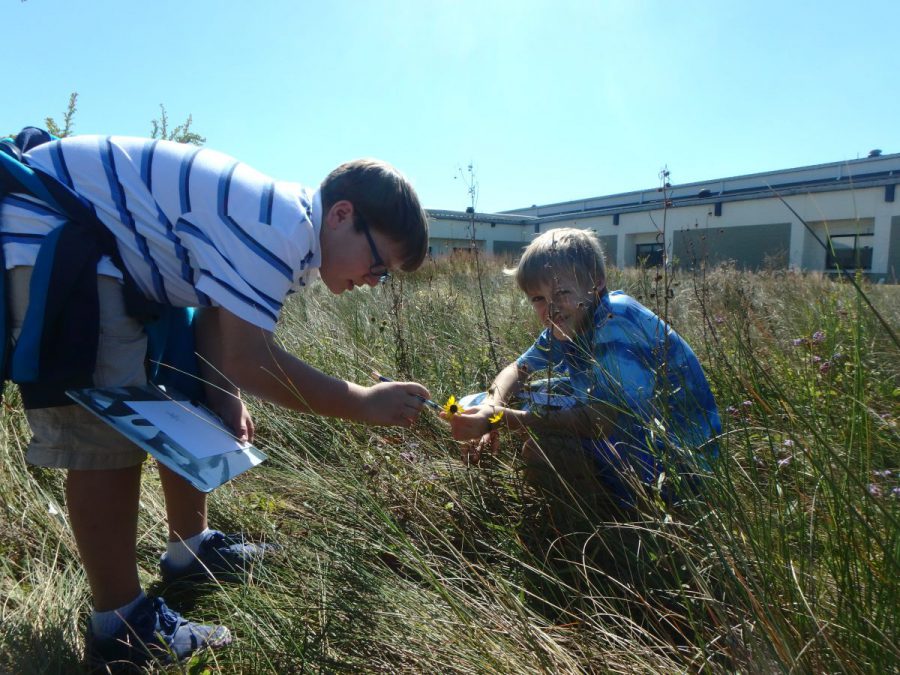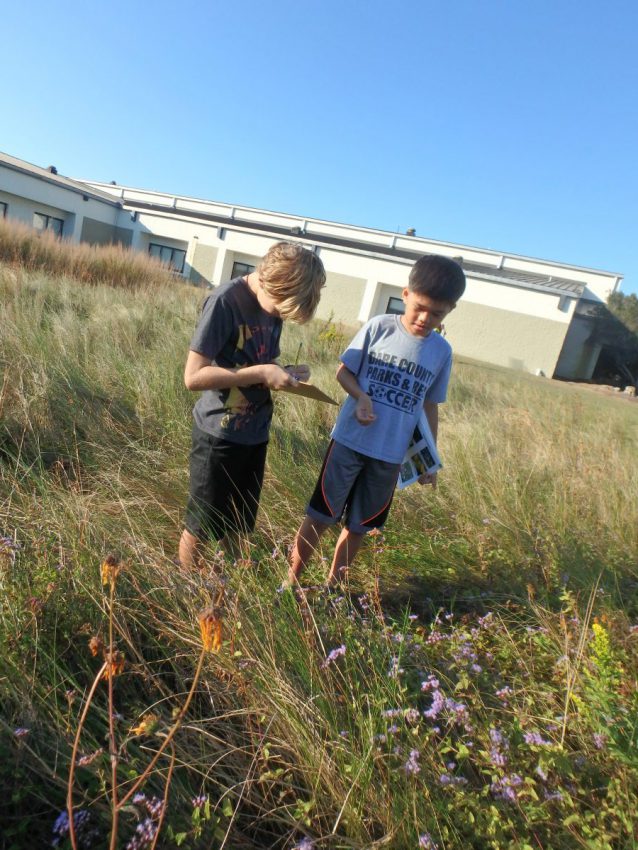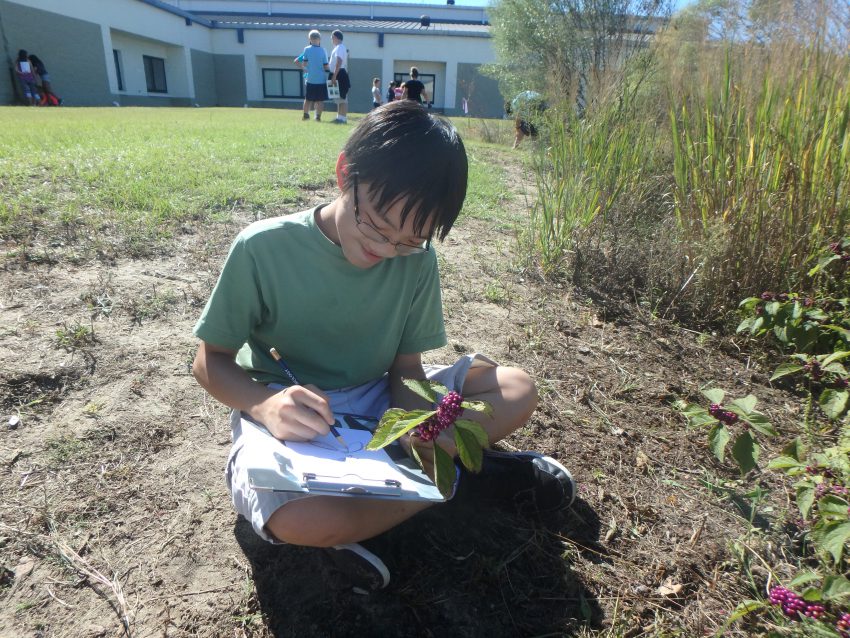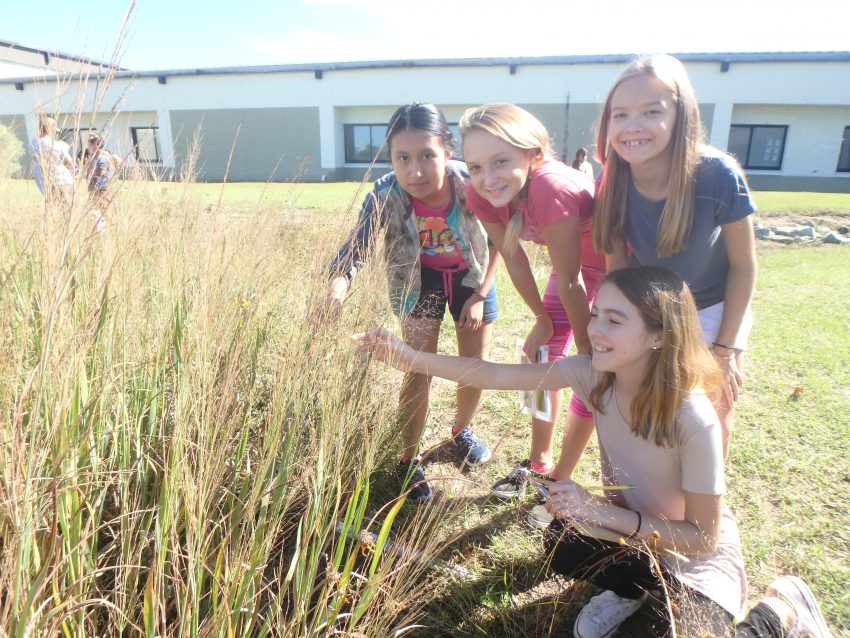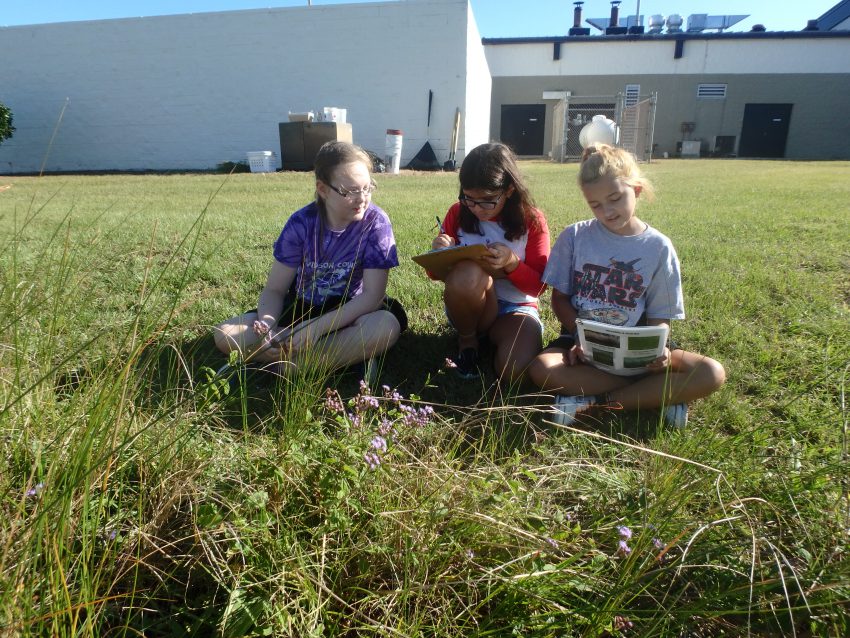The North Carolina Coastal Federation believes that one of the best ways to learn is in a hands-on, collaborative environment, which sixth-grade students at First Flight Middle School in Kill Devil Hills have done over the past few days while observing and tending to the school’s rain garden.
As part of the federation’s school rain garden program, young environmental stewards spent time observing and cleaning up their school’s rain garden.
Rain gardens are constructed shallow depressions containing native plants and mulch. They work the way nature does — they capture stormwater runoff and allow it to soak into the ground. The pollutants in stormwater runoff can lead to fish kills, closed swimming and shellfish harvest areas and buried oyster beds. Rain gardens help prevent these negative impacts by allowing soil and plants to filter polluted stormwater.
Sara Hallas, coastal education coordinator for the federation, led this program that allows the students to learn in a living classroom. Hallas put the sixth-grade science students in small groups for this exercise that helps them learn about phenology, the study of how plants change with the seasons.
“Each group was assigned one of the plant species to focus on. They had to find their assigned plant, using ID sheets I provided. Then, they sketch their plant for their records,” Hallas said. “Along with their sketched plant, the students had to record at least three unique factors they observed about their plant.”
They also noted whether their assigned species served as a habitat. The students will revisit these observations throughout the year to see how their plants have changed with the seasons.
Sixth-grade students in North Carolina learn about phenology, as well as plant parts and stewardship, making this a perfect opportunity to utilize the vegetation in the rain garden to help them apply what they’ve learned in the classroom. They also spent time cleaning up the rain garden, which supplemented their stewardship lessons.
“What better way is there to learn to take care of your environment and your community than having it modeled right on your school grounds, and then be given the opportunity to take the reigns and do it yourself? “ said Liv Cook, a sixth-grade teacher at the school and a member of the advisory board in the federation’s northeast office.
The first lesson occurred just four days after Hurricane Matthew hit North Carolina. Cook said that while a lot of the school grounds were flooded, the rain garden appeared relatively dry.
“The rain garden was practically dry, illustrating perfectly how the garden works and why it is so helpful to our environment. The kids loved being outside, focusing their observations on the plants and animals within the garden and worked together to pull weeds — including sand spurs — and make scientific drawings,” Cook said.
Through the school rain garden program, the federation has worked with students and teachers to build 16 rain gardens at elementary, middle and high schools along the coast. The First Flight Middle School rain garden was built in 2011 with grant funding from the Five Star and Urban Waters Restoration Grant Program and the National Fish and Wildlife Foundation.
Cook said the students really value the time they spend in the rain garden with the federation because it allows them to go outside and actively learn about science by studying their surroundings.
“Working in our school rain garden builds confidence in our students and shows them how simple being an engaged citizen can be,” she said.
Check out some of the photos from the lessons:
- Students examine a flower in the rain garden. Photo: Sara Hallas
- The sixth-grade students were able to work in groups to make interesting observations about their assigned species. Photo: Sara Hallas
- Many plant species grow in the rain garden, and these plants provide habitat to many critters. Photo: Sara Hallas
- A student draws a beautyberry from the rain garden. Photo: Sara Hallas
- Rain gardens are fun and collaborative outdoor classrooms. Photo: Sara Hallas
- Students discuss their rain garden species. The vegetation in rain gardens allows water to soak into the ground. Photo: Sara Hallas

